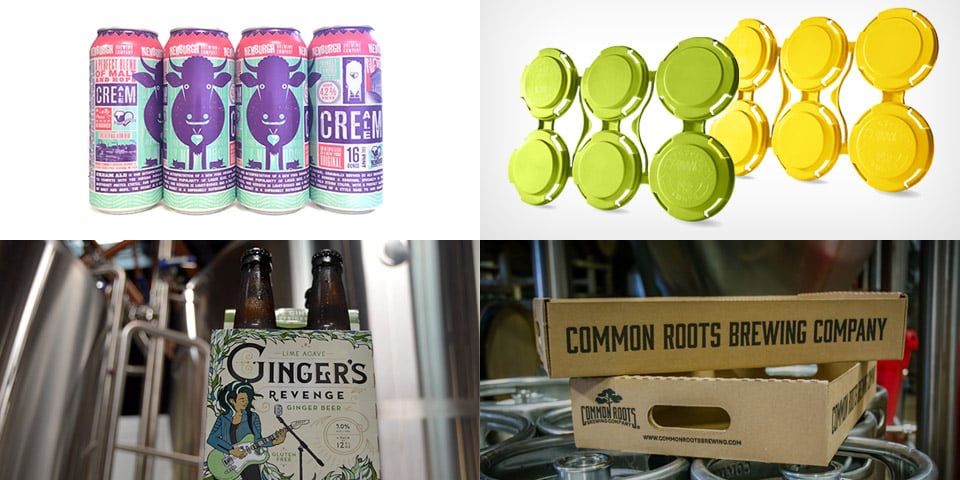
Beer sales in the U.S. are on a slight decline overall. But despite the 1% beer industry slowdown and reports that Millennials are drinking less alcohol than previous generations‚ one sector continues to grow: craft beer. Craft breweries now represent more than 12% of the American beer market. Their performance is only expected to improve as consumers age.
How good does it feel to grow? Just ask the 50 brewpubs, microbreweries and regional craft breweries that made it onto the Brewers Association’s annual list of the fast-growing craft breweries earlier this month.
But as the craft beer market continues to heat up, the number of brands and brews arriving on the scene is doing the same. In 2017, a whopping 75% of the 3,095 new beer products hitting shelves were craft beers. Meanwhile, a recent study from Texas Tech highlights some of the growth challenges in the crowded craft brew space—from marketing to winning over sustainability-minded consumers.
Whether you’re looking to make the Brewer Association’s top growth list in 2019 or to increase your existing market share, now is the time to make craft beer packaging your competitive advantage.
Captivate new customers with craft beer labels (and beyond)
When you hear the words “craft beer packaging,” an eye-catching design is likely one of the first things that comes to mind. And rightfully so. In a Neilson study, 70% of consumers said they made their purchasing decision at the craft beer shelf—not beforehand.
What does that mean for craft brewers? Packaging design matters.
When designing your craft beer packaging, choose text that’s easy to read from a distance. Opt for colors that help your brew stand out on the crowded craft beer shelf, paired with graphics that are distinct to your brand. Memorable craft beer labels and printed cans are crucial, but don’t stop there. By reflecting your brand’s design on more than just the bottle or can itself, you can maximize prime visual real estate.
A quick note on craft beer packaging trends: Although bottles traditionally have been the vessel of choice for craft beer, cans are becoming an increasingly popular option for craft breweries. Data from the Brewers Association shows can sales are increasing faster than bottle sales. This could be driven by a shift in consumer perception about the freshness, quality and taste of canned versus bottled craft beer.
The good news: Whether you package your brew in bottles, cans or both, there are ample opportunities to make your brand stand out from the crowd. By working with a packaging partner who values sustainability, you can accomplish that while showing eco-minded consumers that your brewery shares their dedication to the environment.
Maximize cashflow and space with beer warehouse and inventory programs
When you’re operating a craft brewery, nothing is better than seeing your brew take off. But that success can also usher in major growing pains. If you’re struggling to find the cashflow and physical space for larger inventory volumes, it’s time to expand your packaging resources.
Warehousing and inventory management services can help you maximize your cashflow and ensure you use your facility’s square feet for brewing—not storing extra inventory. Third party packaging solutions providers now offer programs like Just In Time (JIT), which stores your packaging offsite and stocks it as needed. You can also consider leveraging a packaging partner’s existing equipment so that you don’t tie up crucial cashflow into this expensive, avoidable overhead.
Although craft beer warehouses and inventory management might not be as visible as your beer label itself, this “behind the scenes” aspect of packaging is just as crucial to your craft brewery’s success.
Streamline costs with a single packaging solution
What’s one tried and true way to grow a business? To optimize your costs. According to research from the Rand Group, streamlining your roster of vendors is often a way to do just that, whether you’re in the business of craft beer or any other.
Design. Inventory management. Cash flow. Getting your packaged brew into the hands of customers. Given all the moving parts involved with packaging, it’s not surprising that growth-minded craft brewers are getting serious about streamlining their packaging and fulfillment costs. The best way to do that? Ditch the multiple packaging and fulfillment vendors in favor of a single partner.
By opting for one packaging and fulfillment resource, craft breweries benefit from a partner that handles all aspects of the supply chain. This can result in cost savings far beyond what a lower per-piece packaging cost alone could ever deliver. With your bottom line boosted, you can focus more time and resources on crafting the best-tasting brew.
Are you serious about capturing a bigger share of the craft beer market? It’s time to consider how the right packaging and fulfillment solution can help your craft brewery attract new customers, improve its cash flow and boost its bottom line.
